 The history of computers Presentation of the project Group 02361
The history of computers Presentation of the project Group 02361
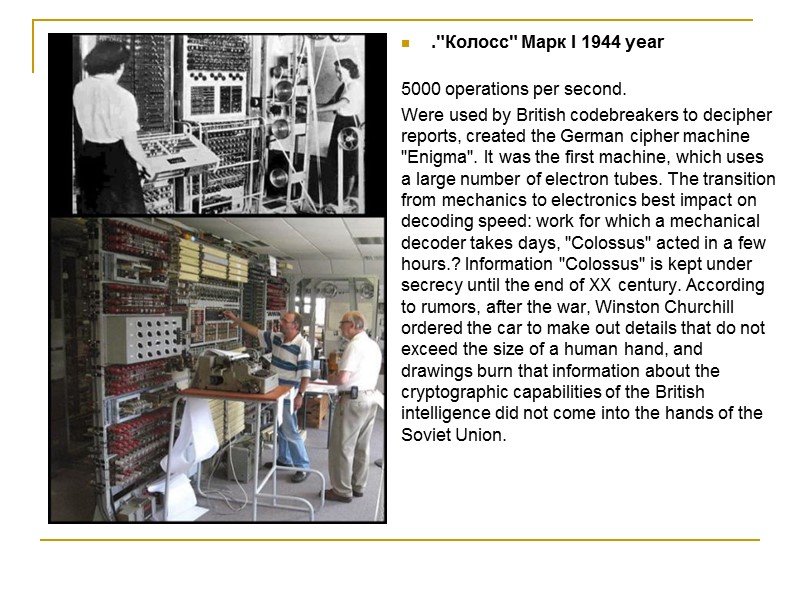 ."Колосс" Марк I 1944 year 5000 operations per second. Were used by British codebreakers to decipher reports, created the German cipher machine "Enigma". It was the first machine, which uses a large number of electron tubes. The transition from mechanics to electronics best impact on decoding speed: work for which a mechanical decoder takes days, "Colossus" acted in a few hours.? Information "Colossus" is kept under secrecy until the end of XX century. According to rumors, after the war, Winston Churchill ordered the car to make out details that do not exceed the size of a human hand, and drawings burn that information about the cryptographic capabilities of the British intelligence did not come into the hands of the Soviet Union.
."Колосс" Марк I 1944 year 5000 operations per second. Were used by British codebreakers to decipher reports, created the German cipher machine "Enigma". It was the first machine, which uses a large number of electron tubes. The transition from mechanics to electronics best impact on decoding speed: work for which a mechanical decoder takes days, "Colossus" acted in a few hours.? Information "Colossus" is kept under secrecy until the end of XX century. According to rumors, after the war, Winston Churchill ordered the car to make out details that do not exceed the size of a human hand, and drawings burn that information about the cryptographic capabilities of the British intelligence did not come into the hands of the Soviet Union.
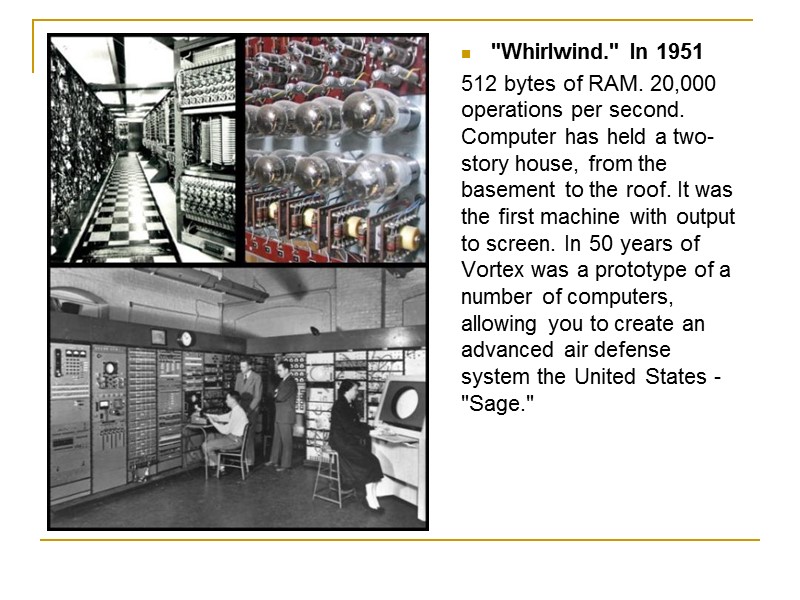 "Whirlwind." In 1951 512 bytes of RAM. 20,000 operations per second. Computer has held a two-story house, from the basement to the roof. It was the first machine with output to screen. In 50 years of Vortex was a prototype of a number of computers, allowing you to create an advanced air defense system the United States - "Sage."
"Whirlwind." In 1951 512 bytes of RAM. 20,000 operations per second. Computer has held a two-story house, from the basement to the roof. It was the first machine with output to screen. In 50 years of Vortex was a prototype of a number of computers, allowing you to create an advanced air defense system the United States - "Sage."
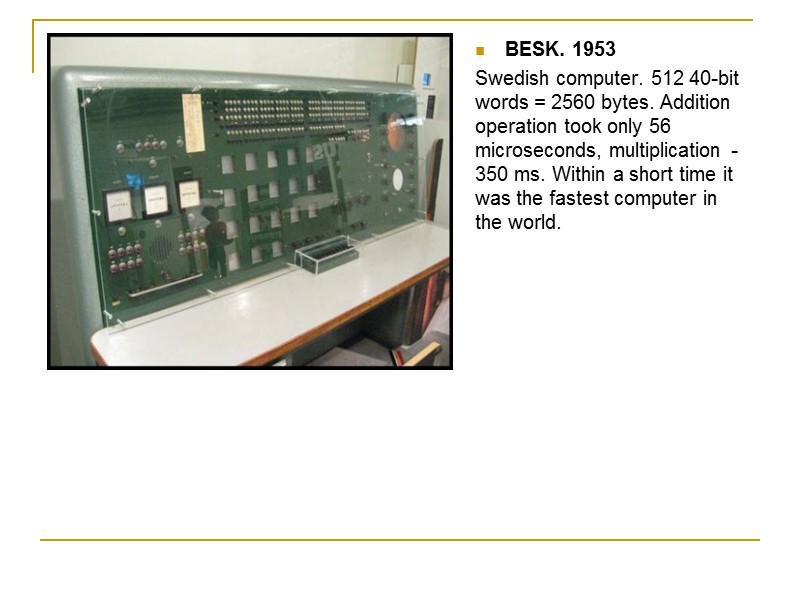 BESK. 1953 Swedish computer. 512 40-bit words = 2560 bytes. Addition operation took only 56 microseconds, multiplication - 350 ms. Within a short time it was the fastest computer in the world.
BESK. 1953 Swedish computer. 512 40-bit words = 2560 bytes. Addition operation took only 56 microseconds, multiplication - 350 ms. Within a short time it was the fastest computer in the world.
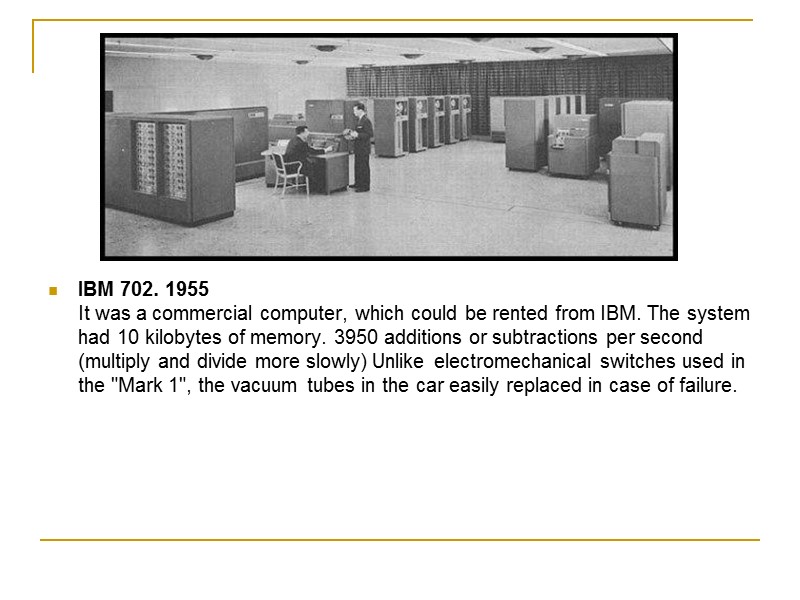 IBM 702. 1955 It was a commercial computer, which could be rented from IBM. The system had 10 kilobytes of memory. 3950 additions or subtractions per second (multiply and divide more slowly) Unlike electromechanical switches used in the "Mark 1", the vacuum tubes in the car easily replaced in case of failure.
IBM 702. 1955 It was a commercial computer, which could be rented from IBM. The system had 10 kilobytes of memory. 3950 additions or subtractions per second (multiply and divide more slowly) Unlike electromechanical switches used in the "Mark 1", the vacuum tubes in the car easily replaced in case of failure.
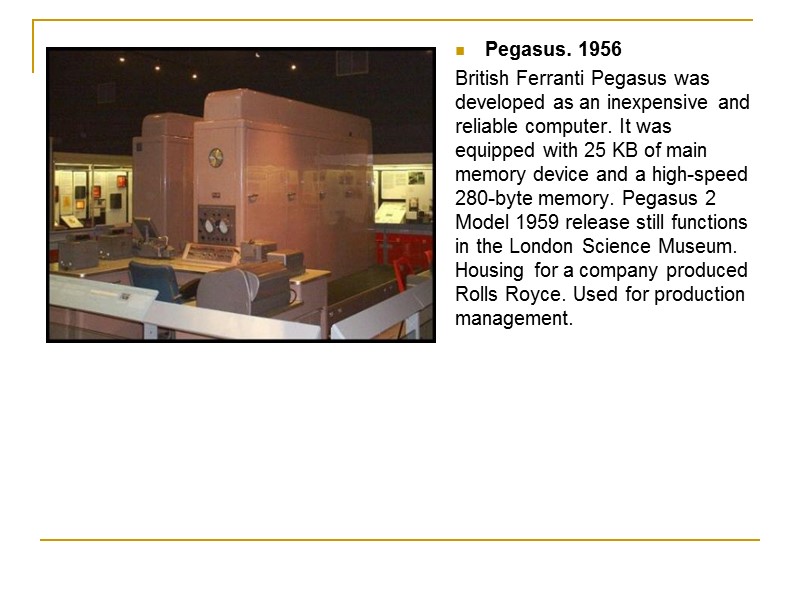 Pegasus. 1956 British Ferranti Pegasus was developed as an inexpensive and reliable computer. It was equipped with 25 KB of main memory device and a high-speed 280-byte memory. Pegasus 2 Model 1959 release still functions in the London Science Museum. Housing for a company produced Rolls Royce. Used for production management.
Pegasus. 1956 British Ferranti Pegasus was developed as an inexpensive and reliable computer. It was equipped with 25 KB of main memory device and a high-speed 280-byte memory. Pegasus 2 Model 1959 release still functions in the London Science Museum. Housing for a company produced Rolls Royce. Used for production management.
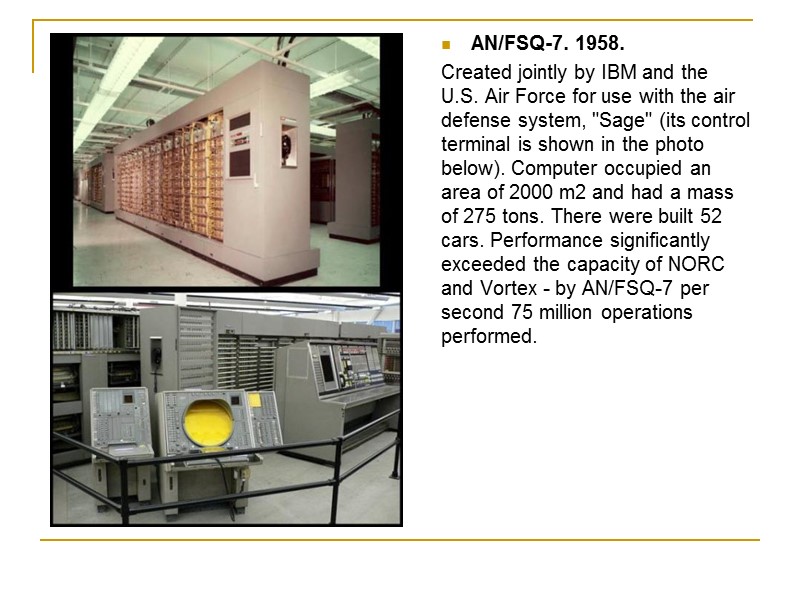 AN/FSQ-7. 1958. Created jointly by IBM and the U.S. Air Force for use with the air defense system, "Sage" (its control terminal is shown in the photo below). Computer occupied an area of 2000 m2 and had a mass of 275 tons. There were built 52 cars. Performance significantly exceeded the capacity of NORC and Vortex - by AN/FSQ-7 per second 75 million operations performed.
AN/FSQ-7. 1958. Created jointly by IBM and the U.S. Air Force for use with the air defense system, "Sage" (its control terminal is shown in the photo below). Computer occupied an area of 2000 m2 and had a mass of 275 tons. There were built 52 cars. Performance significantly exceeded the capacity of NORC and Vortex - by AN/FSQ-7 per second 75 million operations performed.
 Datasaab D2. 1960. Swedish computer weighing 200 kg with 15 KB of memory carried 100 thousand additions per second. The prototype was built to test the feasibility of functioning computerized navigation in aircraft. Datasaab is a division of Computer Systems to develop an aircraft manufacturer Saab.
Datasaab D2. 1960. Swedish computer weighing 200 kg with 15 KB of memory carried 100 thousand additions per second. The prototype was built to test the feasibility of functioning computerized navigation in aircraft. Datasaab is a division of Computer Systems to develop an aircraft manufacturer Saab.
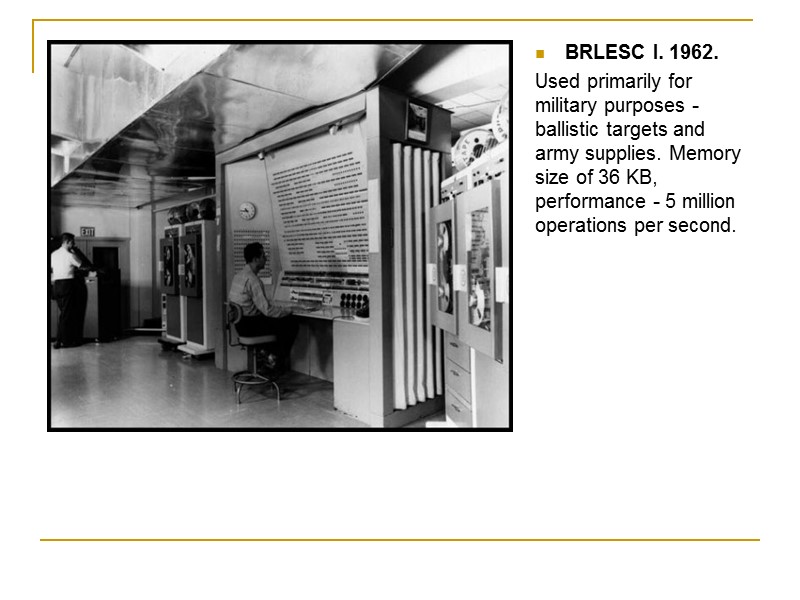 BRLESC I. 1962. Used primarily for military purposes - ballistic targets and army supplies. Memory size of 36 KB, performance - 5 million operations per second.
BRLESC I. 1962. Used primarily for military purposes - ballistic targets and army supplies. Memory size of 36 KB, performance - 5 million operations per second.
 Honeywell 200. 1963. Honeywell 200 and subsequent models in this series are designed as commercial competitors computers from IBM (especially 1401). The system had its own programming language Easycoder.
Honeywell 200. 1963. Honeywell 200 and subsequent models in this series are designed as commercial competitors computers from IBM (especially 1401). The system had its own programming language Easycoder.
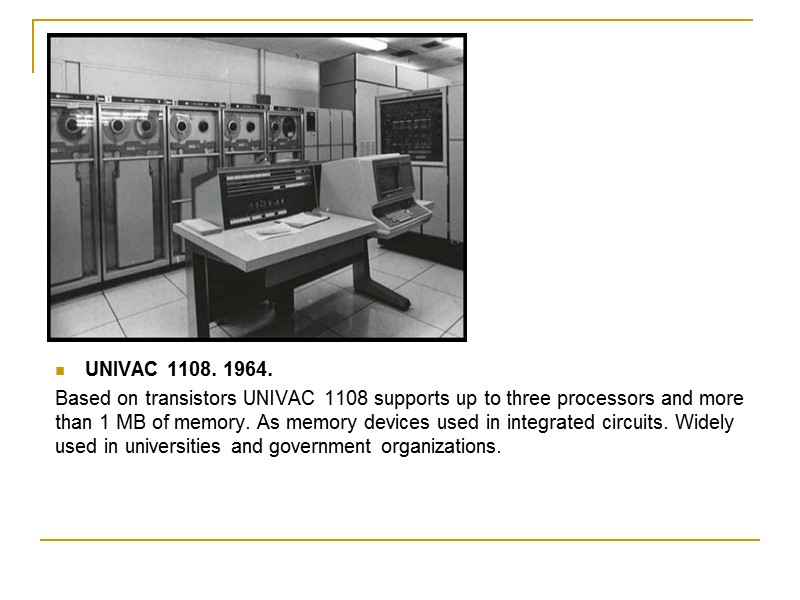 UNIVAC 1108. 1964. Based on transistors UNIVAC 1108 supports up to three processors and more than 1 MB of memory. As memory devices used in integrated circuits. Widely used in universities and government organizations.
UNIVAC 1108. 1964. Based on transistors UNIVAC 1108 supports up to three processors and more than 1 MB of memory. As memory devices used in integrated circuits. Widely used in universities and government organizations.
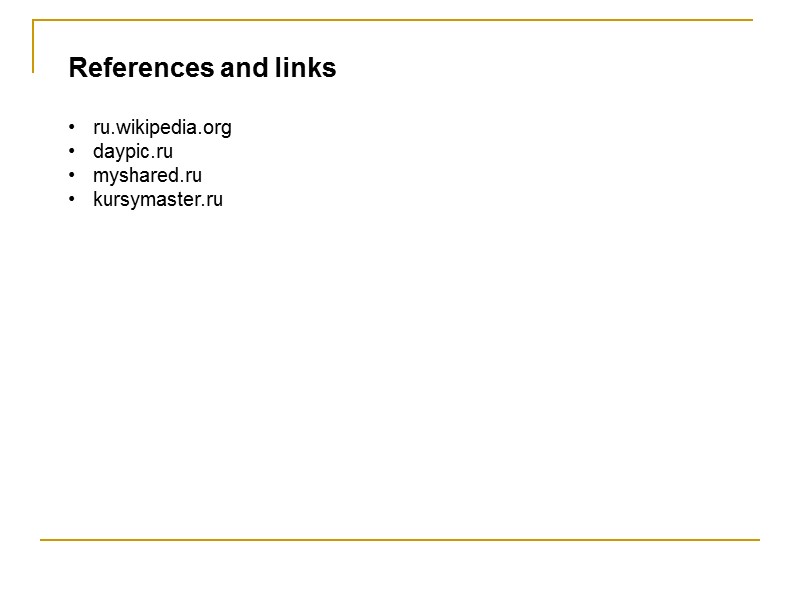 References and links ru.wikipedia.org daypic.ru myshared.ru kursymaster.ru
References and links ru.wikipedia.org daypic.ru myshared.ru kursymaster.ru

























